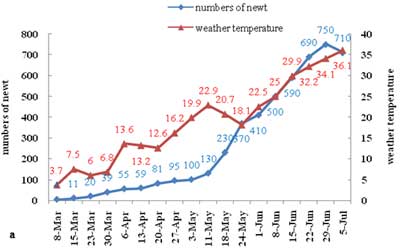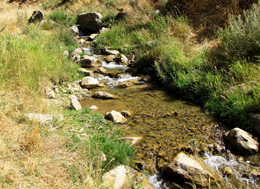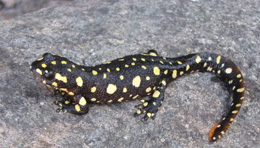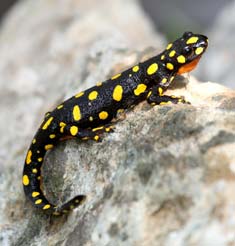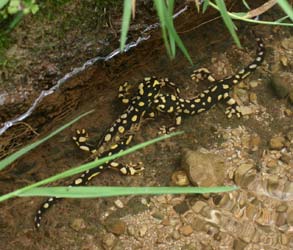|
VOLUME 6 (4) NEURERGUS
SALAMANDERS
INTERNATIONAL CHAPTER - AMPHIBIAN
AND REPTILE CONSERVATION
NOTIFICATION: This website and its affiliates are the
official Internet website portals for the Amphibian and Reptile Conservation journal and our global
conservation network. We own all copyright, exclusive of authors copyright, produced by any
proxy fraudulently presenting as Amphibian and Reptile Conservation including the fraudulent
www.amphibian-reptile-conservation.org as published
by the "Amphibian and Reptile Conservation organisation" as an illicit group led by Craig
Hassipakis. Craig Hassipakis has a long and dismal history of fraudulent activities, including
recently committing perjury in an attack on our global conservation network, as we document see
Internet
Fraud.
The Neurergus
salamanders are found in the Middle East and include two
iconic species for conservation, the Loristan newt (Neurergus
kaiseri) and the Kurdistan newt (Neurergus
microspilotus). We now publish articles on these species in our volume 9 from the
Middle East Chapter of Amphibian and Reptile Conservation.
These
articles include a "A conservation
reassessment of the Critically Endangered, Lorestan newt Neurergus kaiseri (Schmidt 1952) in
Iran."; "Conservation
status of the Kurdistan Newt Neurergus
microspilotus in Kermanshah and Kurdistan
Provinces, Iran."
For notification of the publication of
our articles in press "Sustainable
Management of the Iranian Plateau Herpetofauna" and "The amphibian fauna of
Kurdistan Province, Western Iran." please join our members list at MEMBERSHIP
We have established a website dedicated to Neurergus salamanders at
www.neurergus-conservation.redlist-arcme.org
Table of
Contents
|
Sexual size dimorphism in Neurergus
kaiseri (Caudata: Salamandridae) in south-western Zagros Mountains,
Iran. Mozafar Sharifi, Hossein Farasat, and Somaye Vaissi. Amphibian and Reptile
Conservation 6(4):1-8.
Low resolution PDF 854K High res. PDF
1852K
|
-web.jpg) |
|
Summary: Using
bivariate and multivariate techniques we evaluated sexual size dimorphism in 13
body-related and six head-related metrics from 99 live specimens of the Lorestan
newt, Neurergus kaiseri. Although body measurements gave a clear pattern
of differences between the sexes in N. kaiseri, head measurements showed
no such distinctions.
|
|
Conservation biology, husbandry, and captive breeding of the
endemic Anatolia newt, Neurergus
strauchii Steindachner (1887) (Amphibia: Caudata: Salamandridae).
Sergé Bogaerts, Henry Janssen, Jennifer
Macke, Gunter Schultschik, Kristina Ernst, François
Maillet, Christoph Bork, Frank Pasmans, and Patrick Wisniewski. Amphibian and Reptile
Conservation 6(4):9-29.
Low
resolution PDF 1201K High
res. PDF 2474K
|
|
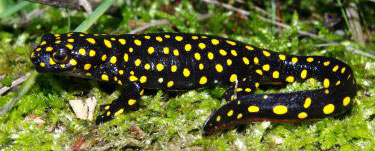
|
Summary: The
long-term experiences of different private breeders on husbandry and breeding of the Anatolia newt,
Neurergus strauchii are presented. This information is introduced and discussed in respect
to the ecology, systematics, and conservation of N. strauchii, to provide for the
successful long-term keeping, breeding, and raising of N. strauchii and also an example
and model that may be used for privates’ contribution to Conservation Breeding Programs for
endangered Neurergus species and other semi-aquatic salamanders.
Summary: The
Kurdistan newt, Neurergus microspilotus inhabits springs, wet caves, and streams in the
western Iranian Plateau in both Iran, in Kurdistan and Kermanshah Provinces, and in Iraq.
Several major populations of N. microspilotus are threatened by urban development. We
gathered autecological data of N. microspilotus and evaluated factors that may affect
distribution and abundance at twelve localities in Kermanshah Province. The survey sites were
classified as undeveloped or developed. We analyzed the effect of ecological factors, including
water pH and specific conductance, temperature, peak of mating behavior, and the time of
egg-laying. We investigated the correlation between daily maximum air temperature and N.
microspilotus population density, and analyzed the impact of urbanization on numbers of N.
microspilotus according to Independent-Samples t-test. The densities of N.
microspilotus across sites were positively correlated with increased water and daily maximum
air temperatures. In addition, we found that densities of N. microspilotus at undeveloped
sites were significantly higher than those of developed sites.
Summary: We report on
the rediscovery of the Lake Urmia newt, Neurergus crocatus in Iran, 150 years after its
original description and last report by Cope 1862. The Lake Urmia newt is classified as Vulnerable
by the IUCN Red List of Threatened Species. Some specimens, both adult and larvae, of N.
crocatus were found in Iran during two field surveys near the Iran-Iraq border (south west of
West Azerbaijan Province, surrounding the type locality “Urmia,” at 1786-1823 m above sea level
[a.s.l.] elevation). Water samples were taken from two
breeding habitats, as preliminary data, and were analyzed for 13 chemical variables. Our
confirmation of N. crocatus in northwestern Iran indicates that protection is needed if
this species is to persist in Iran. Water chemistry analysis of the two new habitats showed
that in this area N. crocatus inhabits good water quality.
Summary:
Little is known about the distribution and current conservation status of the two species of
mountain dwelling newts of the genus Neurergus found in the Zagros Mountain in northern and
northeastern Iraq: the Critically Endangered Kurdistan newt Neurergus microspilotus
(Nesterov 1916), and the vulnerable Lake Urmia newt Neurergus crocatus (Cope 1862).
Surveys in the Kurdistan region of northeastern Iraq from 2007 to 2012 resulted in the discovery of
N. microspilotus at seven new localities distributed in the Zagros Mountain of Sulaymaniya
Province. The new locations provide a major range extension of N. microspilotus. In
addition, four new localities of N. crocatus were located between 2007 and 2013. In
addition to Neurergus newt surveys, interviews with local people were also conducted through the
use of photographs. Severe drought during recent years as well as anthropogenic habitat destruction
and pollution have been considered as main threats to the survival of both species in northern
Iraq. Here we describe new geographical distributions and the conservation status of both
Neurergus species found in Iraq.
|

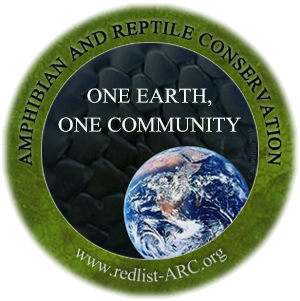
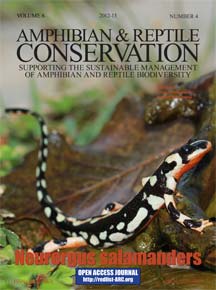
-web.jpg)

